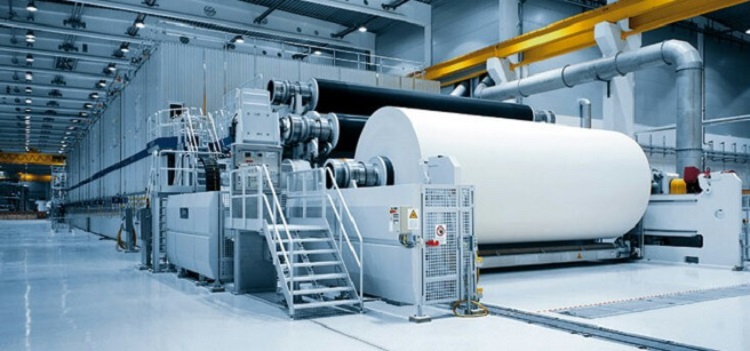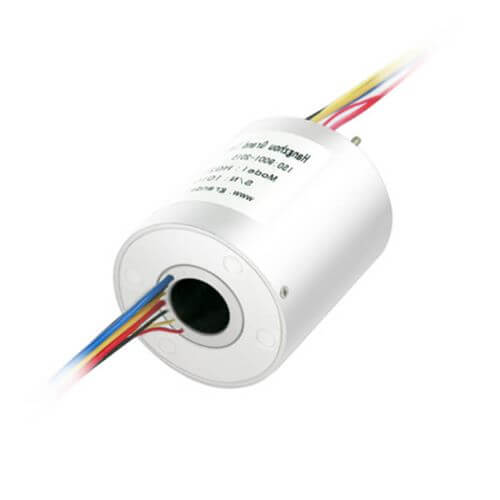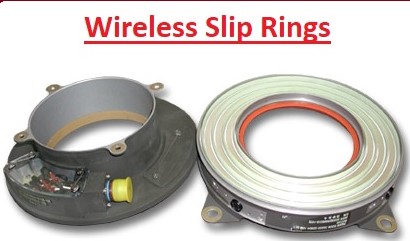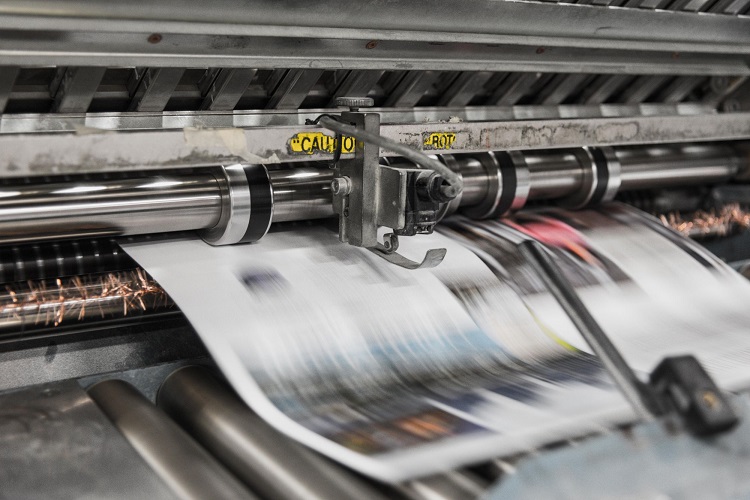This article delves into the vital role that slip rings play in the printing and paper industries, exploring their functional dynamics, user concerns, technological advancements, and the benefits they offer. We will navigate through the common challenges, address frequently asked questions, and look ahead at the evolving landscape of slip ring technology within these fields.
Introduction to Slip Ring Application in the Printing and Paper Industries
Slip rings play a pivotal role in the vast arena of the manufacturing industry, serving as the backbone for countless electromechanical systems that require the transmission of power and data across rotating interfaces. Acting as a bridge, they ensure that electrical connectivity is seamlessly maintained between stationary and rotating parts, thereby enabling the continuous flow of power and signals essential for the operation of complex machinery. This functionality is not just crucial; it’s indispensable in industries where operational continuity, precision, and efficiency are paramount.
In the printing and paper industries, the application of slip rings takes on a critical role, reflecting the unique operational dynamics and the high demands placed on equipment performance. Given the nature of these industries—where processes like high-speed printing, paper rolling, and cutting involve continuous motion and the need for constant power and data transfer—the use of slip rings becomes not just beneficial but necessary. They are ingeniously integrated into the machinery, facilitating the unimpeded rotation of drums, rollers, and cylinders that are central to the printing and paper manufacturing processes.
The specific use of slip rings in these sectors addresses a spectrum of crucial operational needs, from improving equipment reliability and productivity to reducing downtime. For instance, in high-speed printing presses, slip rings ensure that despite the rapid and ongoing motion of rollers, there is a steady supply of power and data, thus maintaining operational consistency and quality output. Similarly, in paper manufacturing, slip rings play a vital role in the continuous production lines, where paper is moved through various stages of processing without interruption. Here too, they help maintain the delicate balance between operational efficiency and the high-quality standards these industries are known for.
Therefore, within the context of the printing and paper industries, slip rings are not merely components; they are fundamental enablers of technological advancement and operational efficiency. Their application exemplifies how critical the seamless integration of electromechanical systems is to the foundations of modern manufacturing processes, reflecting a broader narrative on the importance of innovation and reliability in industrial operations. This essential role underpins the dynamic and ever-evolving landscape of the printing and paper industries, highlighting the continuous pursuit of excellence through technological integration.

Understanding the Use of Slip Rings in Printing and Paper Industries
How Slip Rings Function in This Context
In the bustling environments of the printing and paper industries, slip rings operate as a nexus for the conduction of power and transmission of data to machinery in motion. Each slip ring consists of two primary components: a stationary part often referred to as the ‘brush’, and a rotating part known as the ‘ring’. As machinery operates, the electrical connections between the static and rotating parts of the system must be maintained; this is the function served by slip rings. They facilitate consistent electrical contact—even amidst the rotational movement—thus allowing systems such as printing presses and paper manufacturing equipment to perform their tasks without electrical interruption, despite their moving parts.
Types of Slip Rings and Their Specific Roles
The types and roles of slip rings in these industries are as diverse as the machines they serve.
Through-bore slip rings feature a hole in the center to accommodate the mechanical aspects of a system, such as a central shaft, and are commonly used where space is not a primary constraint. Their design enables them to handle significant electrical loads, making them suitable for heavy-duty printing equipment.

Pancake slip rings, with their flat and disc-like shape, are used where length is limited but the diameter is not, applying particularly to equipment where axial space is at a premium. Their design advantages make them apt for applications inside compact printing machinery.

Wireless slip rings, showcasing the forefront of slip ring technology, employ inductive coupling to transfer power and data. This eradicates mechanical wear and tear due to the absence of direct contact, which is particularly beneficial in high-speed printing and paper manufacturing with their demanding maintenance schedules.

Each type singularly addresses specific needs within the industry, be it spatial constraints, load capacity, or the minimization of maintenance overhead.
Impact of Slip Rings on the Overall Functioning of the Machinery
The incorporation of slip rings into machinery has far-reaching implications for the operational efficacy of the printing and paper industries. Their influence extends beyond the mere facilitation of electrical continuity. By providing a reliable means of power and data transmission, slip rings enable machines to operate at higher speeds and with greater precision, which is crucial for printing where detail and quality are paramount, and in paper manufacturing, where consistency dictates product value.
Moreover, their presence allows for more complex motions and processes within machinery. For example, in modern printing machinery, slip rings enable the transmission of digital signals for precise control over printing heads, which move at significant speeds and directions. In paper production lines, slip rings ensure that even as the paper is rolled, cut, and dried at different stages of the process, there is no loss in operational tempo or efficiency.
In summary, slip rings imbue the printing and paper machinery with a level of operational sophistication that directly translates into increased productivity, higher throughput, and the capacity for intricate processes. It’s this instrumental role that situates slip rings not just as components, but as catalysts for continual performance improvements in the context of two industries where innovation and uptime are integral to success.
Concerns and Challenges in Application
Potential Issues Faced by Users
While slip rings significantly enhance the operational dynamics of the printing and paper industries, they are not without their unique set of challenges. Three top concerns that users often grapple with include electrical noise interference, mechanical wear and tear, and the need for regular maintenance.
Electrical noise interference can pose a challenge, especially in high-speed data transfer situations, marring the accuracy of the digital signals being transmitted and impacting overall machine performance. Mechanical wear is another concern, as the constant motion between the stationary brushes and rotating rings can – over time – cause detriment to the system. This directly influences the lifespan and reliability of the slip rings.
Moreover, routine maintenance of these critical devices—cleaning, lubricating, and replacing worn-out parts—demands time and resources, which can interrupt production processes and, in turn, impact efficiency and profitability.
Impact of Challenges on Efficiency and Output Quality
These challenges can put a dent in the overall operational efficiency of the printing and paper industries. Electrical noise can lead to signal distortion and potentially cause machine errors, affecting printed or manufactured paper product quality. Additionally, mechanical wear can lead to momentary losses in electrical contact, causing machine disruptions, which can negatively impact production schedules and operational tempo. Then, the need for ongoing maintenance can result in unwanted equipment downtime and operational costs, impacting the industry’s bottom line.
Mitigation Strategies
Addressing these concerns requires a multipronged approach. The issue of electrical noise can be mitigated with shielded cables, signal filters, and careful system grounding, ensuring clear signal communication and thus maintaining machine accuracy. To tackle wear and tear, users might opt for slip rings with robust designs, durable contact materials, and advanced surface treatment technologies that enhance lifespan and reliability. For example, gold-on-gold contacts are regarded for their longevity and minimal maintenance needs.

Preventive maintenance plays a key role in avoiding unexpected breakdowns and promulgating the longevity of the slip ring equipment. Scheduled checks for wear, lubrication requirements, and cleaning can go a long way in maintaining stability in production and staving off unexpected breakdowns. Specific protocols can be implemented to complement production schedules and reduce downtime caused by maintenance needs.
Moreover, technological advancements—like the development of contactless or wireless slip rings that eliminate physical wear by adopting magnetic induction principles—present promising potential for reducing maintenance overhead and enhancing the lifespan of slip rings.
These measures underscore the users’ commitment to leveraging the transformative potential of slip rings while proactively addressing their inherent challenges, thus creating a harmonious balance in the pursuit of manufacturing excellence.
Key Benefits of Slip Rings in the Printing and Paper Industry
Advantages Offered by Slip Rings to These Industries
In the realms of printing and paper manufacture, slip rings bring forth numerous advantages that directly influence the production capabilities, operational efficiency, and overall competitiveness of businesses. These benefits stem from the unique ability of slip rings to deliver consistent power and signal transmission to rotating machinery parts, thereby enabling continuous and reliable operation.
Increased Productivity
The core advantage offered by slip rings is the enhancement of productivity. With the seamless transfer of electricity and data, machines such as high-speed printers can operate at optimal speeds without interruption. This continuous operation translates to higher output rates and quicker turnaround times for large printing projects or paper production runs. For instance, a high-speed digital press leveraging advanced slip ring technology can churn out thousands of consistently high-quality printed sheets without the need for frequent stops, sharpening the competitive edge of a printing business.
Reduced Downtime
Downtime in any industry is a costly affair, and this holds especially true for equipment-intensive operations such as printing and paper manufacturing. Slip rings contribute to reducing downtimes by enabling more reliable and maintenance-free operation of rotary equipment. Implementing durable slip rings constructed from robust materials and incorporating modern designs can significantly extend the maintenance intervals and reduce the risk of unexpected machinery failures. For example, a large paper mill replacing traditional contact slip rings with the latest contactless models experienced a notable reduction in unproductive downtime, directly impacting its turn-around efficiency and reducing labor costs associated with maintenance.
Enhanced Reliability
Reliability is another critical factor for the printing and paper industries, where consistent quality and precise execution are the hallmarks of success. Slip rings enhance the reliability of machinery by ensuring stable electrical connections, even under the stresses of high rotational speeds and varied load conditions. This reliability allows for precision control of machines, leading to uniform product quality throughout production cycles. A case in point would be a flexographic printing operation that reported fewer print defects and rejection rates after retrofitting their presses with high-quality slip rings, thereby significantly improving product quality control.
Use Cases to Illustrate Benefits
One particular case study highlighting these benefits is a large-scale rotational printing press. This press initially experienced periodic signal loss and power fluctuations, attributed to sub-standard slip ring systems, which affected both the quality of the printed materials and the efficiency of the process. By upgrading to a specialized slip ring designed for high-speed data and power transmission, the press achieved a marked reduction in signal disruption and power loss, leading to an impressive uptick in production rates and a reduction in waste due to print errors.
Another example would be from a paper processing plant where high reliability and continuous operation are crucial. The plant incorporated a custom slip ring solution tailored to operate in a harsh, pulp-dust environment. The result was a dramatic decrease in the frequency of maintenance stoppages needed to clean standard slip rings affected by the debris, effectively reducing downtime and maintenance costs, while simultaneously increasing the long-term reliability of the equipment.
These instances underscore the profound impact of high-quality slip rings on the printing and paper industries—spurring heightened productivity, diminishing unproductive downtime, and enhancing equipment reliability. This trifecta of benefits not only streamlines production processes but also nurtures the growth and sustainability of businesses operating in these demanding sectors.
Pushing Boundaries: Modern Advancements in Slip Ring Technology
Emerging Trends in Slip Ring Technology
The landscape of slip ring technology is witnessing a revolution, characterized by significant leaps in innovation aimed at enhancing the functionality, reliability, and efficiency of these critical components. Key among these advancements are wireless power transmission and smart monitoring systems, alongside other pioneering developments that promise to redefine the application of slip rings in various industries, including printing and paper manufacturing.
Wireless Transmission: At the forefront of this technological evolution is the advent of wireless slip rings, which utilize electromagnetic fields to transfer power and data across rotational interfaces. By eliminating physical contact, these devices drastically reduce mechanical wear and tear, thereby addressing one of the most pressing concerns associated with traditional slip ring systems.
Smart Monitoring: Another breakthrough is the integration of smart monitoring capabilities into slip ring systems. With the inclusion of sensors and advanced diagnostics, these intelligent slip rings can predict failures, track performance metrics, and even schedule preventive maintenance. This real-time feedback loop ensures optimal operation, minimizes downtime, and significantly prolongs equipment lifespan.
Impact on User Concerns and Future Applications
Addressing User Concerns: These technological advancements are directly aimed at mitigating the longstanding challenges associated with slip ring applications. For example, wireless transmission technology negates the issues of electrical noise and mechanical degradation, thereby enhancing signal integrity and operational longevity. Similarly, smart monitoring redefines maintenance protocols by shifting from reactive to predictive maintenance strategies, reducing unplanned downtime and associated costs.
Future Applications: The implications of these innovations extend far beyond the immediate resolution of existing concerns, paving the way for new applications and efficiencies. Wireless slip rings, for instance, can facilitate the development of more complex rotating systems without the limitation of wiring constraints, empowering designers with unprecedented flexibility. Smart slip rings, with their predictive maintenance capabilities, are expected to become an integral component of the Industry 4.0 paradigm, where intelligent machinery and data analytics converge to drive unprecedented operational efficiencies.
In the context of the printing and paper industries, these advancements can translate to faster, more reliable production lines that can adapt more readily to changes in demand and technology. A paper manufacturing plant equipped with smart, wireless slip rings could see significantly reduced maintenance costs, lower downtime, and increased throughput, all contributing to higher profitability and sustainability.
Moreover, as these technologies continue to evolve and mature, the potential for even more innovative applications appears limitless. For example, the integration of IoT (Internet of Things) capabilities within slip ring assemblies could enable remote monitoring and control of equipment, further enhancing operational efficiencies and opening new vistas in automation and machine-to-machine communication.
In summary, the modern advancements in slip ring technology are not merely incremental improvements but are pushing the boundaries of what’s possible in terms of machinery design, performance, and reliability. As these technologies continue to develop and find application within the printing and paper industries, they promise to lead a wave of transformation marked by smarter, more efficient, and more resilient production processes.
Slip Rings in a Developing Industry
Impact of New Trends on Slip Ring Application
The ongoing advancements in slip ring technology, particularly in the realms of wireless transmission and smart monitoring, are set to broaden and redefine their application in the developing printing and paper industries.
Conventional slip ring systems, despite their shortcomings, have played a key role in the evolution of rotational equipment in these industries. However, the emergence of new trends like Industry 4.0, digital manufacturing, and an increasing focus on sustainability are driving the demand for more sophisticated, efficient, and reliable rotating solutions – and this is where the latest developments in slip ring technology come to the forefront.
Wireless slip rings, by eliminating physical contact, can reduce mechanical wear and alleviate maintenance burdens, enabling the production equipment to operate for longer durations without interruption. This could lead to increased equipment uptime, reduced operational costs, and more efficient resource utilization – all aligning with the industry trend toward optimizing productivity and sustainability.
The advent of smart slip rings, which are capable of real-time condition monitoring and performance tracking, allows operators to preempt maintenance needs and prevent untimely machinery breakdowns. This proactive approach to maintenance falls perfectly into the tenets of Industry 4.0, enabling a shift towards data-driven decision-making and predictive maintenance.
The Future Shape of Printing and Paper Manufacturing about Slip Rings
Looking towards the future, it’s clear that slip ring technology will continue to evolve in tandem with the needs of the printing and paper industries, shaping to a considerable extent how these industries operate.
As industries gravitate towards less wastage, higher efficiency, and digitalized workflows, the role of slip rings will become more pronounced. The shift towards alternative slip ring technologies like wireless and smart slip rings stands to revolutionize production processes by enabling continuous, efficient, and remotely monitored operations.
Moreover, as the trend towards more intricate and high-speed rotational machinery continues, the demand for highly reliable and efficient slip ring solutions that can handle the increasing loads and data rates will likely surge. This might entail the development of slip rings with even better electrical performance, longer service life, and greater integration with automation and IoT systems.
Ask us about our slip ring compatibility with your equipment.
In conclusion, the slip ring’s role in the printing and paper manufacturing sectors will arguably grow in significance as these industries mature. With continued technological progressions like wireless transmission and smart monitoring, the future of slip rings appears increasingly intertwined with the industry’s march towards higher efficiency, reduced maintenance needs, and digital transformation. Therefore, it’s not far-fetched to envision a future where slip rings play an integral part in a connected, efficient, and smart production environment, driving forward the manufacturing prowess of these developing industries.
Conclusion
Slip rings emerge as unsung heroes in the printing and paper industries, bridging the gap between static and dynamic components to ensure non-stop productivity. Their effective application is a testament to the industries’ commitment to innovation and their future readiness.
FAQs about Slip Ring Application in Printing and Paper Industries
Q: What are the main types of slip rings used in the printing and paper industries?
A: Different applications may require through-bore slip rings for central mounting, pancake slip rings for space-saving designs, or wireless power transmission to reduce maintenance needs.
Q: How do slip rings enhance printing and paper manufacturing processes?
A: They enable the transfer of power and signals to rotating platforms without interruption, contributing to efficiency and preventing downtime.
Q: What advancements in slip ring technology are most relevant for the printing and paper industries?
A: Developments in materials for improved durability, wireless data transmission, and smart monitoring systems are among the most influential.
Q: What functions do slip rings serve in the printing and paper industries?
A: In the printing and paper industries, slip rings are utilized to provide a continuous electrical connection between stationary and rotating parts. They enable power and signal to be transferred to machinery that needs to rotate smoothly without interruption, ensuring that high-speed printing presses and paper manufacturing equipment operate efficiently and reliably.
Q: How do slip rings affect the maintenance schedules for printing and paper machinery?
A: Traditional slip rings, which rely on physical contact, typically require regular maintenance to address wear and ensure proper electrical contact. However, with the adoption of wireless and smart slip ring technology, maintenance demands are significantly reduced. Smart slip rings can even alert you to potential problems, so you can schedule maintenance before a breakdown occurs, thus streamlining operations and minimizing downtime.
Q: Are slip rings in the printing and paper industries being replaced by wireless technology?
A: While wireless technology is making headways in many fields, it doesn’t entirely replace the need for slip rings in the printing and paper industries, especially in high-power applications or situations where reliable data transmission is critical. Wireless slip rings or contactless slip rings are increasingly used to complement traditional slip ring technology but are becoming more prevalent as the technology matures.
Q: Can slip rings transmit data as well as power, and how reliable is this transmission?
A: Yes, slip rings can transmit both power and a wide range of data signals with high fidelity. The reliability of the transmission depends on the quality of the slip ring. Advances in materials and design have led to better noise immunity and reduced interference, allowing high-speed data transmission to be as reliable as power transmission in modern slip ring assemblies.
Q: With the printing and paper industries aiming for sustainability, how do slip rings contribute to this goal?
A: Slip rings contribute to sustainability in the printing and paper industries by enhancing machine efficiency and reliability, leading to less waste and reduced energy consumption. Newer slip ring technologies, such as those with wireless capabilities or smart monitoring, are designed to significantly cut down maintenance and downtime—which also supports sustainability goals by reducing resource usage and improving production efficiency.
Q: What challenges do slip rings help overcome in high-speed printing applications?
A: High-speed printing applications pose challenges like maintaining signal integrity, managing heat dissipation, and preventing wear and tear due to high rotating speeds. Slip rings address these issues by providing a reliable and stable connection that can handle the demands of high-speed rotation, thereby ensuring consistent quality and uninterrupted production.
Q: Can smart slip rings integrate with Industry 4.0 initiatives in these industries?
A: Absolutely. Smart slip rings are easily integrated into Industry 4.0 initiatives as they come equipped with sensors and communication capabilities that enable data acquisition, machine-to-machine communication, and integration into larger automated and monitored systems. They are fundamental in creating a smart manufacturing environment that is both data-driven and interconnected.


